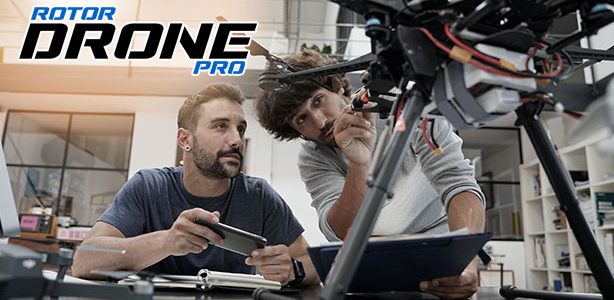Thanks to a drone carrying an infrared camera, Mountain Rescue Aspen was able to locate a lost Colorado hiker in pitch-black conditions. It was the first mission where MRA used a Matrice 210 drone fitted with an infrared camera and a second, powerful zoom camera. The drone was used at night to pinpoint where a woman was walking and to direct a ground team to her.
“We would have never found this woman,” said Doug Paley, a rescue leader.
MRA received the call at 6:20 p.m. on a Wednesday that the hiker was overdue. She was last seen at 2 p.m.
“The one thing that challenges rescues is we never have enough information,” Paley said.
In this case, they were searching for the proverbial needle in a haystack. The area where they believed the woman to be was thickly wooded with braided streams and marshy areas. It was pitch black.
They launched the drone from Frying Pan Road at approximately 8:30 p.m., about the same time when some of the foot-pounders were directed to head back in and call off the search for the night.
Bill Murphy, chief pilot for MRA who was at the controls that night, methodically searched one area of terrain and moved on to another. He began searching a third area when he thought he spotted the woman walking, but they had to make sure it wasn’t a team member. A rescue leader directed everyone in the field to stop walking. The subject viewed through the infrared camera was still walking. They knew they had their hiker. (Murphy also spotted numerous deer and elk from the heat they gave off.)
The closest ground crew was a half-mile away, so Murphy was able to scope out the terrain and direct them to the best route to reach her. He also helped them navigate the terrain back to the road.
“It was such a team effort,” Murphy said.
The drone proved indispensable on its first mission and MRA sees huge potential. It could be deployed to pinpoint the location of a cliffed-out or lost hiker on a steep slope and to determine if ground or air crews would be needed for a rescue. It can provide ground teams with GPS coordinates to a lost or injured party. In the case of a climbing accident, the drone could be used to search for signs of life. In a rescue or retrieval, the drone could pick out a landing zone for a helicopter. It could even deliver supplies. It also will help with the vital role of making sure rescuers are safe over the course of a mission, said David Swersky, a longtime rescue leader.
Jack Earnest, an MRA volunteer and member of the board of directors, said the infrared camera provides obvious advantages for nighttime searches. It picks up heat and converts it into an electronic signal, which produces a thermal image on a monitor.
That could prove valuable because the drone could be used to locate a person during nighttime hours when a helicopter is restricted from flying for safety reasons. The drone could be used to get information about the condition and location of a person — and get rescuers in place quicker to render aid.
“It could save a life,” Earnest said.
The 30-time optical zoom will be an immense addition, as well. A drone hovering high over a mountain slope will be able to scan the area for a person, potentially eliminating the dangerous work of a helicopter making passes with spotters.
This drone can hover at 200 feet over ground level.
“With old technology you had to get pretty close,” Murphy said.
The drone was used on a second mission July 5 to supplement the work of a ground crew searching for an overdue hiker returning from North Maroon Peak.
“At approximately 6:30 (the evening of July 5) these teams working together made contact with the overdue hiker — who was discovered to have gone off route and was now ‘cliffed out,'” MRA said on its Facebook page. “The climber was uninjured and walked out under his own power with the guidance of MRA foot teams.”
In a recent training exercise, Paley posed as a missing hiker. The drone located him and dropped a radio to put him in contact with rescuers.
The drone, cameras, batteries and other accessories were purchased in March for $30,000. The money was raised completely through contributions.
MRA has two pilots for the drone and three in training.
“It’s like any other skill set — we need training, training, training,” Paley said.
The rescue organization has four batteries for the drone, each capable of powering it for 30 minutes, with variances for conditions. Limited battery life means the key to its use will be ferrying it to a site close to an incident for launching. That will make it most efficient.
There are programmed limits on how high off the ground the drone can fly and there are FAA regulations that must be followed.
Alex Bruchetta, a deputy and public information officer in the Pitkin County Sheriff’s Office, said the drone has the potential to be an important supplemental tool for the people in the field.
Paley said ground crews will remain as important as ever, but the drone will evolve into another critical tool that helps them be more efficient with their time and energy.
“The drone technology is a game changer,” Paley said.



















